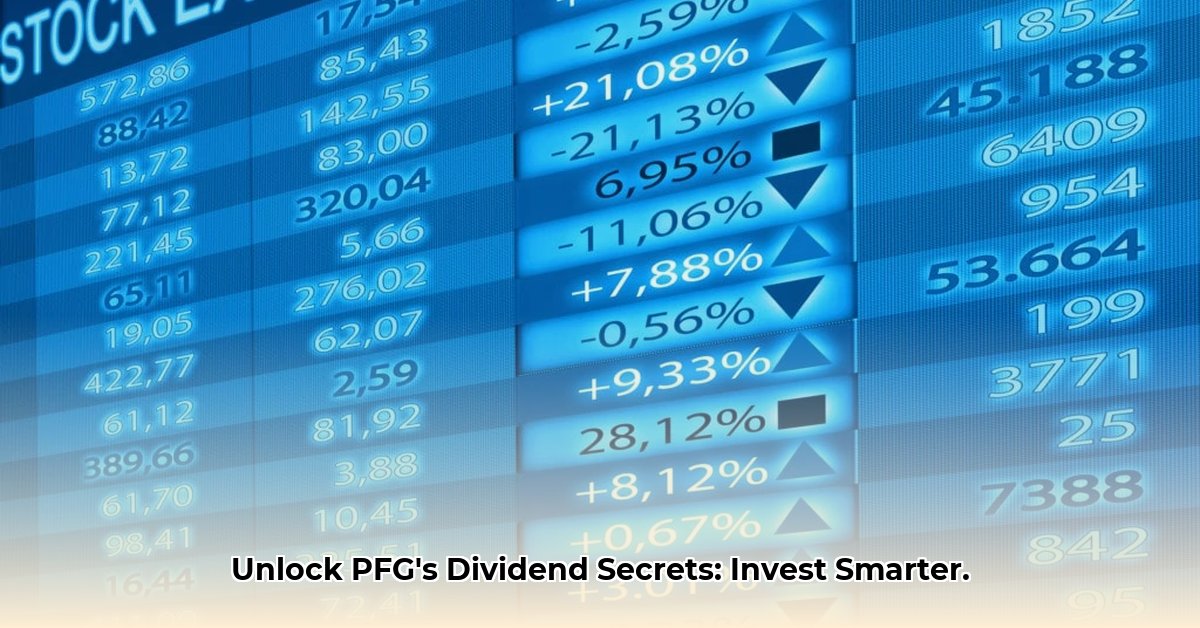
Understanding PFG's Dividend Landscape: A Guide for Investors
Principal Financial Group (PFG) currently offers a compelling dividend yield. However, navigating the complexities of its dividend history presents a unique challenge for investors. Unlike many companies, readily available historical dividend data for PFG is surprisingly scarce. This lack of transparency makes predicting future dividend payments difficult, requiring a more nuanced approach to investment analysis. This guide provides a structured methodology for investors to conduct due diligence and make informed decisions about PFG, even with limited historical data. We'll cover how to leverage available information to assess PFG’s current financial health and develop a suitable investment strategy.
The Data Challenge: Why is PFG's Dividend History So Elusive?
The primary hurdle in analyzing PFG's dividend history lies in the limited access to readily available historical data. This presents a significant obstacle for investors looking to assess long-term trends and predict future dividend payouts. Several possibilities could explain this data gap: company policy, archival limitations, or perhaps a combination of factors. Regardless of the reason, the scarcity of data necessitates a more focused and resourceful approach to due diligence. This lack of readily accessible historical information doesn't negate the potential for investment; it simply requires a more in-depth examination of available resources.
How to Conduct Thorough Due Diligence on PFG's Dividend Potential
Accessing and interpreting PFG’s financial information requires a multi-pronged strategy. Here's a step-by-step guide emphasizing official channels:
Visit PFG's Investor Relations Website: Begin with the company's official investor relations page. This is the most direct source for information about PFG's dividend policy, past announcements, and financial presentations. Look for press releases, annual reports, and any other relevant documentation.
Explore SEC Filings: The Securities and Exchange Commission (SEC) mandates public disclosure of financial information by publicly traded companies. Utilize the SEC's EDGAR database (https://www.sec.gov/edgar/searchedgar/companysearch.html) to access PFG's official filings. Pay close attention to their annual reports (10-K), quarterly reports (10-Q), and any relevant proxy statements. These filings contain crucial information including:
- Dividend history (if available): While complete historical data may be lacking, these filings will contain any recent dividend announcements and relevant details.
- Payout ratio: This metric reveals the proportion of earnings distributed as dividends, offering insight into the sustainability of future payouts.
- Financial health indicators: Examine key metrics like earnings per share (EPS), debt-to-equity ratio, free cash flow, and return on equity (ROE). These figures provide a comprehensive picture of PFG’s financial strength and ability to maintain dividend payments.
Analyze Peer Performance: While PFG's data may be incomplete, comparing its current dividend yield and payout ratio to similar companies in the financial services industry can provide valuable context. This comparison can help you determine whether PFG's dividend is relatively high, low, or in line with industry standards.
Assessing PFG's Current Financial Health: A Focus on Sustainability Signals
While piecing together a complete historical dividend picture is challenging, analyzing PFG's current financial metrics is paramount. Several key indicators can shed light on the sustainability of future dividend payments:
- Payout Ratio: A high payout ratio implies that a substantial portion of earnings is being allocated to dividends. This is a crucial area to scrutinize, as a high ratio might indicate potential concerns about dividend sustainability, especially when compared with industry competitors.
- Earnings and Revenue Growth: Consistent and positive growth in earnings and revenue is essential for long-term dividend sustainability. Stable revenue streams provide a strong foundation for continued dividend payments.
- Debt Levels: High levels of debt can strain a company's financial flexibility and potentially jeopardize future dividend payouts. A high debt-to-equity ratio warrants careful consideration. This ratio demonstrates the company's ability to manage its debt relative to its equity.
- Free Cash Flow: Free cash flow represents the cash generated after accounting for operating expenses and capital expenditures. Strong free cash flow is critical for supporting dividend payouts and ensuring that company operations remain unaffected.
Developing a Personalized Investment Strategy: Tailoring to Risk Tolerance
Given the challenges in fully understanding PFG’s dividend history, your investment strategy must be tailored to your specific risk tolerance.
For Risk-Averse Investors: Prioritize diversification. Allocate your investments across a range of assets to reduce overall portfolio risk. Given the uncertainty surrounding PFG’s future dividends, this cautious approach might involve minimizing your exposure to PFG or offsetting it with more stable investments. Regular monitoring of PFG’s financials is essential.
For Moderately Risk-Tolerant Investors: Regularly review PFG's financial performance via the company's investor relations materials and SEC filings. Adjust your investment strategy according to the changing financial situation of the company. A medium-term investment horizon with regular reviews is suitable.
For Risk-Tolerant Investors: Considering the high current dividend yield, a potentially higher risk strategy might involve a larger allocation to PFG. However, this strategy necessitates a thorough understanding of the inherent risks and a strong ability to adjust to potential shifts in the market and company performance.
Conclusion: Informed Decisions, Not Speculation
Investing in PFG requires a thorough and cautious approach. The lack of readily available historical dividend data underscores the importance of meticulous due diligence. By systematically examining available resources and focusing on current financial indicators, investors can make informed decisions that align with their personal risk profiles. Remember, a sustainable dividend payment is a more valuable indicator of long-term performance than a temporarily high yield. This detailed analysis, while challenging due to the data limitations, is essential for responsible investing.
Resources
- PFG Investor Relations
- SEC EDGAR Database